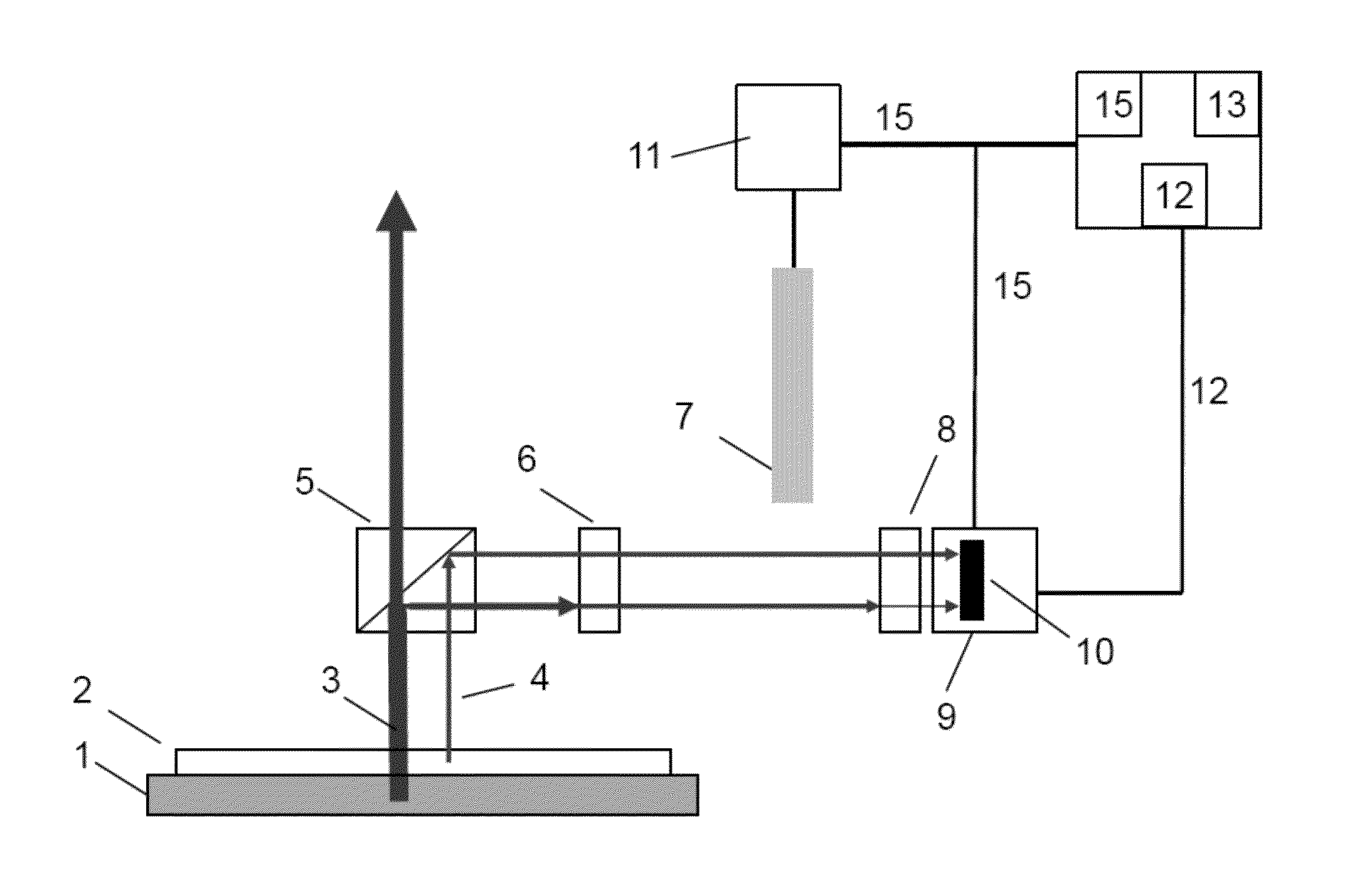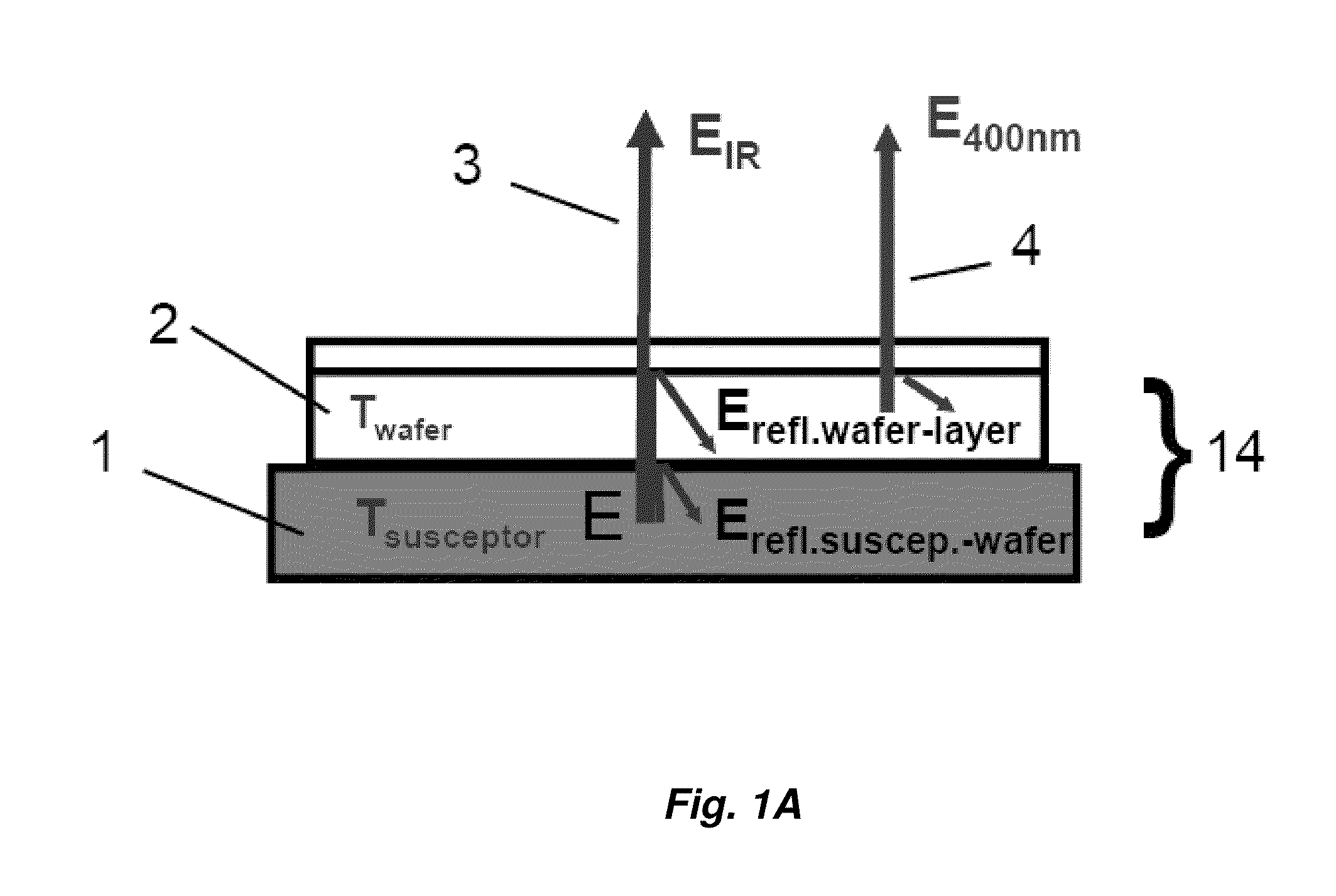Pyrometer adapted for detecting UV-radiation and use thereof
a pyrometer and uv radiation technology, applied in the field of pyrometers, can solve the problems of inability to produce reliable, sufficiently precise thermal radiation measurement within the range of 250 to 450 nm, and achieve the effect of robustness and sensitiv
- Summary
- Abstract
- Description
- Claims
- Application Information
AI Technical Summary
Benefits of technology
Problems solved by technology
Method used
Image
Examples
Embodiment Construction
[0061]FIG. 1A shows the thermal radiation 3, 4 of a semiconducting silicon-carbide or Gallium-Nitride wafer 2 mounted onto a graphite-susceptor 1. During semiconductor production, for example for the production of blue or white LEDs, the semiconducting wafer 2 is mounted onto the susceptor 1. The semiconducting wafer 2 and the susceptor 1 represent the sample 14 for which the temperature has to be determined. During the industrial process the temperature of the substrate 14 is about 800° C. Therefore the semiconducting wafer 2 and the susceptor 1 emit thermal radiation 3, 4. The spectral distribution of the thermal radiation 3, 4, i.e. the wavelengths emitted by the semiconducting wafer 2 and the susceptor 1 strongly depend on the composition of the material. The susceptor 1 is e.g. made of graphite emitting infrared thermal radiation 3. In contrast, the semiconducting wafer 2 is transparent for infrared radiation 3. Typical semiconducting wafers 2 are made from silicon-carbide, gal...
PUM
 Login to View More
Login to View More Abstract
Description
Claims
Application Information
 Login to View More
Login to View More - R&D
- Intellectual Property
- Life Sciences
- Materials
- Tech Scout
- Unparalleled Data Quality
- Higher Quality Content
- 60% Fewer Hallucinations
Browse by: Latest US Patents, China's latest patents, Technical Efficacy Thesaurus, Application Domain, Technology Topic, Popular Technical Reports.
© 2025 PatSnap. All rights reserved.Legal|Privacy policy|Modern Slavery Act Transparency Statement|Sitemap|About US| Contact US: help@patsnap.com



